I’m always disappointed that my urban acquaintances know very little of the suburbs surrounding their city. But I’m never more disappointed than when urbanites spout clichéd opinions about suburban living.
Get Started for FREE
Sign up with Facebook Sign up with X
I don't have a Facebook or a X account
 Your new post is loading... Your new post is loading...
 Your new post is loading... Your new post is loading...
Sally Egan's curator insight,
June 29, 2014 9:31 PM
Mega cities and the challenges they face for the future is focus in this article. Great statistics on populations and urban densities are also included.
Alec Castagno's curator insight,
October 3, 2014 1:45 PM
This article illustrates how urban renewal can be carried out without the negative effects usually associated with gentrification. The local government did this by working directly with the residents to ensure the improvements made directly reflect the needs and desires of the people that live there. It led to an improved area that not only provided activities and facilities for the locals but helped reduce the criminals and other unsavory characters that frequented the areas before. As the mayor in the article states, the park worked so much better than the common "policy of more cops and guns".
Alyssa Dorr's curator insight,
December 16, 2014 9:20 PM
This article starts off with a story about a four year old girl named Jessica Lopez. Jessica has suffered severe asthma attacks since she was born. Her condition always worsened in the fall, due to dust rising up from the abandoned fields that bordered her family’s one-room house. Last year, city officials turned the dusty fields next to her house into a beautiful park with trails, playgrounds and shaded pavilions. Oddly enough, Jessica's asthma did not come back that fall. Her mom insists that the creation of this parked saved her life and I couldn't agree more. Most of the pollution and dust were taken out of the environment, thus making it easier for Jessica to breathe. Jessica is just one person that got help out of this. However, the amount of people in that area is equivalent to about 1.3 million. It has to have helped millions of other people as well. The park's lawn are kept nice and green and watered. Solar powered lamps are used to light the park up at night and the park is a great afternoon spot for children and their families. 
Rachel Phillips's curator insight,
February 12, 2015 6:44 PM
Personally, I love stories like this. These people took something that wasn't doing anyone any good, and was just sitting there, and turned it into something that brought the community together. This park brought life to a poor area, even though they really didn't have the means or the money to do so. However, this park can have so many benefits, and it can become an outlet. It can lower crime rates, promote health, bring in people from other cities, etc.

Steven Flis's curator insight,
December 17, 2013 2:12 PM
Its been known that Americans have lavish lifestyles compared to outher populous countries. In this article they show a represntation if the entire world lived like (had as much space) americans and it was astoudning. It would take 4 earths to fit the world if everyone had this lavish lifestyle. So we obviously need to change our ways. Cities ae very helpful to sharing this earth. They serve as a main hub so youll only have to ship to a few places. This with the shortening of distances would save tons of gas and othe rescources. But as the article states everyone living in a Main city wouldnt be possible because people need to produce outside the city. So in my opinion for this city world to work it would need to be a few megacities preferably one on each continent and for them to the city be surronded by production methods.
Peter Hillman's curator insight,
July 22, 2014 11:42 PM
An interactive site for comparisons of city sizes

Meagan Harpin's curator insight,
September 28, 2013 3:39 PM
The most surprising piece of information in this article is that white Britons are leaving London because of the minorities that are moving in. As of 2013 only 59.9% of London was white, meaning that the miniorities are taking over Ethnic part of London much faster then first anticipated. 
Joseph Thacker 's curator insight,
March 29, 2014 5:43 PM
Since immigrants have flocked into London, it appears some of the White population has left the city because of it. The ethnic change is happening very quickly in London and White British population is no longer the majority. As large numbers of immigrants enter London, large numbers of White people leave the city. London is becoming a melting pot rather quickly.
Wilmine Merlain's curator insight,
December 18, 2014 2:40 PM
If white flight is happening in Europe, where are all of its native migrating to? I know for years, there has been a large migrant population from the continent of Africa migrating to Europe, more specifically London, but where in the world could Britain's native be migrating to? Its common to hear of people migrating from rural areas to better neighborhoods, but with the influx of people looking for a better livelihood resemble that of the people living in countries such as India, China and Japan? |
Katelyn Sesny's curator insight,
October 31, 2014 11:48 AM
This article asks and answered the question of how and when we will reach a time and place where we live will be limited (as we weigh down the world)? -UNIT 1

Sarah Cannon's curator insight,
December 14, 2015 9:50 AM
Its amazing how much traffic can affect air pollution, especially in such a small place. Dhaka is heavily populated, traffic in this small but heavily populated community is very stressful, even to look at in the photo provided above. I can't imagine living in such a heavily populated area. I guess you can compare it to downtown New York City. However the pollution is more intense in Dhaka than it is in NYC. 
Matt Ramsdell's curator insight,
December 14, 2015 3:35 PM
This is a prime example of a megacity and the population that it cohabits the city. The huge populaiton that is se densley populated in such a small area creates for a large traffic and pedestrian issues. After watching the video you would think that there would be more accidents but living in a city like this you would get use to the population ways and learn the ways of life. 
Alex Vielman's curator insight,
December 15, 2015 12:28 AM
Dhaka, the capital of Bangladesh, suffers from overpopulation. As funny and nerve-wrecking this video was, it shows an instability on how important technology is in order for safety. In the video we can see cars just passing by fast and furociuosly within centimeters of crashing in the car in front of it. There is no one guiding traffic and nonetheless, any stop and traffic lights on the streets. It is a free for all in the middle of the capital when it comes to driving and this is a lack of safety for the people in Bangladesh. It is almost impossible for people to cross the road without a high risk of getting driven over. We can also see how there are so many cars in the are was well. The region is very overpopulated and to think how worse it would be if everyone in the area owned a car.

Jason Wilhelm's curator insight,
May 22, 2014 12:21 PM
Urban sprawl is a rising problem in the world due to the lack of control and its massive impact on the surrounding environment. These footprints show how unique each city's sprawl is. The surrounding environment is playing a huge role in where and how far each city extends. Chicago, for example, is limited on its eastern side due to Lake Erie's close proximity, and Cleveland is in a similar situation but on its north side where Lake Erie is.
Sid McIntyre-DeLaMelena's curator insight,
May 29, 2014 12:35 PM
The cities are organized (approximately) to population and shows the size of cities accordingly. The different sizes of cities and their correlating populations is thus revealed from urban places around the world. Urban regions stay rather functional and could be seem similar across the board, focusing on major economic activity and transportation.

Colleen Blankenship's curator insight,
September 5, 2018 10:04 AM
What observations can you make about where the largest cities are? What will be the impact be of these areas in terms of resources such as housing, power, food, etc.? Where will you choose to live?
Elle Reagan's curator insight,
May 26, 2015 9:38 PM
I thought this article was good as it gave information on how the world as we know it is growing and cities are popping up everywhere. Developing countries are seeing a large increase in growth and with that comes the growth of cities. With this, more megacities will be born and hopefully the quality of life increases with life in cities.
Jared Medeiros's curator insight,
April 22, 2015 7:17 PM
Major cities in the world should take a deeper look into controlling pollution problems in their cities. At some point, these places will no longer attract people to live in these areas, thus lowering the impact that these industries may have. But as long as people are still living here by the millions and there is tourism, and buisness is booming, nothing will be done about the issue. 
Courtney Barrowman's curator insight,
May 27, 2015 12:08 PM
Summer reading KQ4: pollution, smog, megacity, sustainability
Mark Hathaway's curator insight,
November 25, 2015 6:22 AM
Pollution is a huge issue facing both Hong Kong, and the rest of China in general. So far the government has done little to actually combat the problem. The Chinese governments response has been to pretend that the problem does not really exist. A fake skyline can just erase the problem. In reality dealing with the pollution issue would actually help the Chinese economy. When people seek to go on a vacation, they are seeking a destination that is clean and safe. Who wants to visit a place were, you have to ware a mask to prevent the breathing in of armful chemicals. A cleaner less polluted china would lead to an expanded tourism industry.
Tracy Galvin's curator insight,
May 1, 2014 2:25 PM
It is nice to see an organization that is not just blindly giving resources to people in need but actually empowering them and training them to be able to get the things they need through work. The women in this story describe how they have learned to make and sell things in order to take care of their families and they describe how empowering that feels.
Mark Hathaway's curator insight,
November 28, 2015 6:53 AM
Megacities are beginning to populate the entire globe. In the developing world, more and more megacities are beginning to form. Jakarta Indonesia is an example of a rising megacity. This rapid urbanization has placed a special burden on the resources and local economies of many developing nations. This areas are not prepared to deal with the rapid population growth associated with the development of a megacity. This strain placed on the local areas, will often lead to terrible living conditions for the lower classes of society. Sanitation will often become a major issue in many of these megacities. Large portions of the population will often lack a proper sanitation system. The lack of proper sanitation will lead to the onset of deadly diseases. The effects of rapid urbanization can be deadly, for those living in the pooper regions of society.

Kaitlin Young's curator insight,
September 17, 2014 12:10 PM
In a time where more people are moving away from their rural roots to try and make it big in the city, I think it's becoming more and more important that we focus on how to utilize our urban surroundings in a beneficial way. These photos are proof that it is possible, and I believe that cities in the United States should be more open to urban farming. It could be a way to not only take pressure off of families in cities trying to feed their children, but will also educate all sorts of people on where food comes from, and the importance of the environment. 
Maria la del Varrio's curator insight,
December 13, 2014 3:16 PM
Urban agriculture is a reality in third world countries. In Dominican Republic almost everyone in the country side have its own land to plant necessary food and fruits. The most popular is plantain and fruit is orange. In urban areas is rare to see this, so is surprising to see how central Asians are doing it.
BrianCaldwell7's curator insight,
March 16, 2016 3:58 PM
I love Yann Arthus-Bertrand's photography; so many of them are geography lessons in and of themselves as he captures compelling images of the cultural landscape. This particular gallery shows 32 stunning images including this one above showing urban agriculture in Geneva, Switzerland.
Tags: agriculture, food, landscape, images, urban, unit 5 agriculture, unit 7 cities.

Joseph Thacker 's curator insight,
April 15, 2014 5:57 PM
Wow, I cannot imagine living in these conditions. It looks smaller than a prison cell; only people pay to live there. These extreme living conditions are a result of over population in an area. It seems the city of Hong Kong is running out of places to build and house the abundance of people living there. It appears the average person in Hong Kong lives in these conditions due to the high price tags on larger apartments. This is a sad reality. 
Jess Deady's curator insight,
May 1, 2014 11:06 AM
Living in such close quarters must be incredibly hard to do for those people who are new to Hong Kong and know something different. For Chinese residents, this is normal. Living in such small areas is a part of the Chinese daily life and culture. China is so population dense that this is the result of living there, tiny living spaces.
James Hobson's curator insight,
October 6, 2014 3:47 PM
(in-class 4: Hong Kong) What I take away from this is the theme of supply and demand. Though these condiions seem stereotypically negative, it seems like those who live in the photographed homes are relatvely well off (food, TV, clothing, etc.). This supports the view that living in these tight conditions is less of a choice and more of something that has to be put up with. Now that Hong Kong has been developed 'across', it'd be a good guess to say that recently investments have been made to build 'up' with highrises and skyscrapers (unless like Dubai they sat to mak either own islands, whic geographically would be less likely here). The questionof sustainability is also an issue, i.e. at what point will it be impossible to cram in any more inhabitants? I wonder if a future migration / spreading-out into other areas has started to occur yet or will soon, like the suburbanization which occured in the U.S. after the advent of the automobile. If so, would it be mainland China, despite the political tensions?
Liam Michelsohn's curator insight,
October 17, 2013 1:54 PM
I was very exited by the work being done by Bimal Mendis and Joyce Hsiang. I hear to much on the news and in conversation about over population, energy shortages and brutal living conditions. Creating a digital interactive medium is the most efficient way to educate the internet consuming public about issues and developments all over the world. It reminds me of the blue marble picture taken from Apollo 17, the first full color image of our planet. This image is considered to be the defining moment that awoke the conservation movement and understanding that the earth is our home and should be treated as such. I cant help hoping a program like “the city of seven billion” will help people to relies we are all one species and from that develop a move beneficial way of coexisting.
Liam Michelsohn's curator insight,
December 10, 2013 4:13 PM
A very interesting article on changes in landscape, while looking though this I came aross so many little things i never noticed about the topical layout of housing. The main thing that is apparent is density, how closely each house is put together, the amount of land each has as well as the view from the property. Its aslo interesting to see how the design of the area can be made for easy access or be desigend to keep people out with only one enctancte and exit. All of these charasticts make up how the land is desired as well as econimcly priced, which then determins who will be able to live there.
Jacqueline Landry's curator insight,
December 15, 2013 8:53 PM
Having the streets interconnected allows for easy traveling throughout the area. when there is more density in an area it means there are more houses , more people. The sprawl has the center on the place and the streets go out around it. The way the streets are made are for different reasons,. 
megan b clement's comment,
December 16, 2013 12:57 AM
This article talks about twenty different housing patterns and how we base these housing patterns around our society or enviroment. How looking at housing patterns can tell you what kind of neighborhood one lives in from the sky. Looking down and seeing a golf course with lush grass and big backyards shows you that this neighborhood is very expensive. Or Canal houses that utilize every inch of the waters edge to financially make them able to charge higher prices for the homes because each house has a water view and is on the waters edge.
|






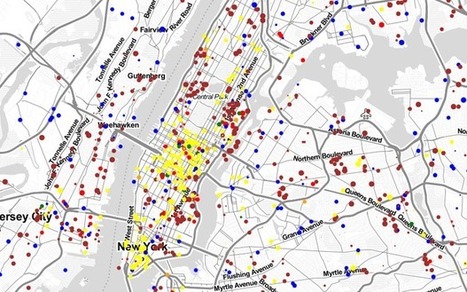


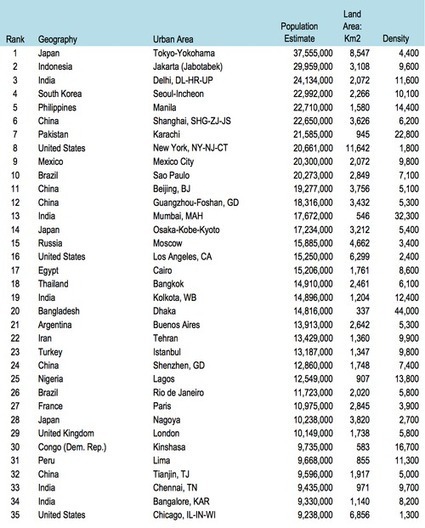



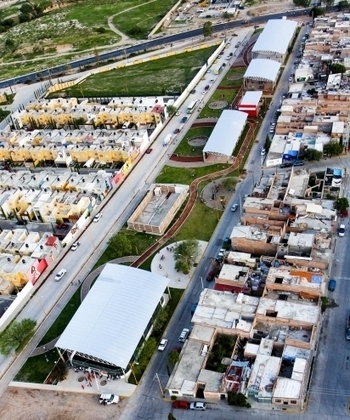
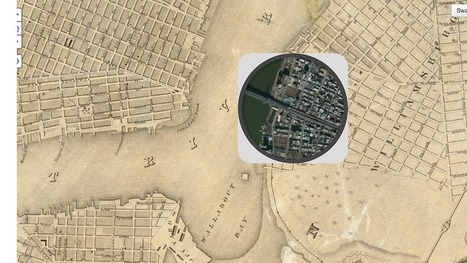


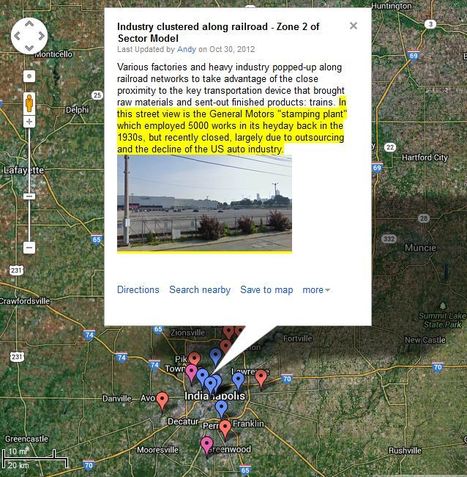

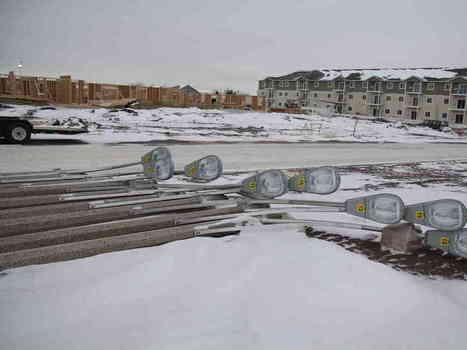
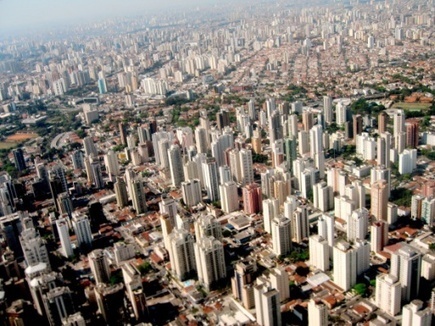
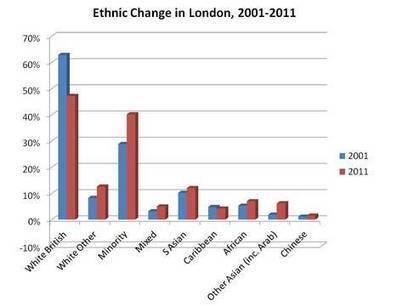
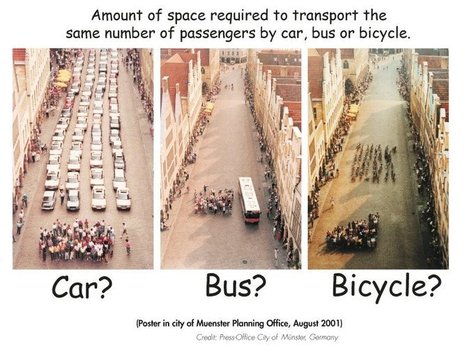
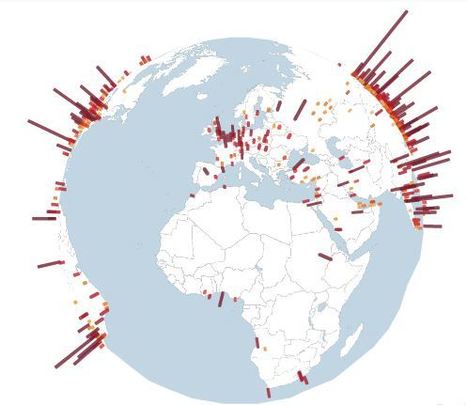




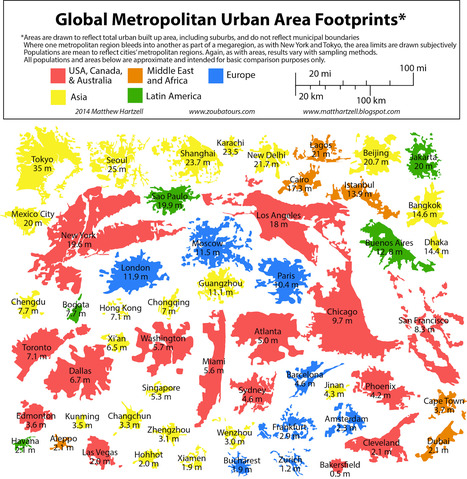

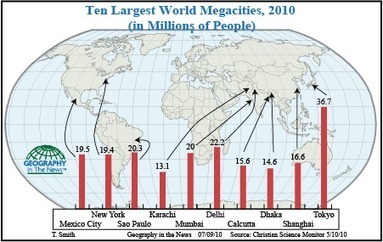

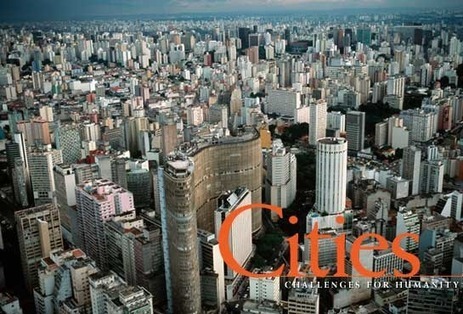
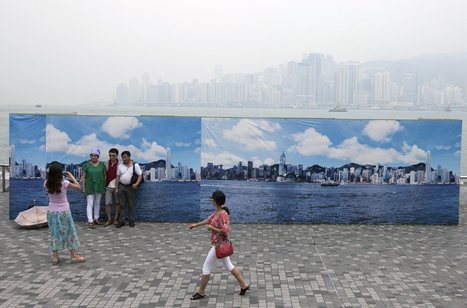
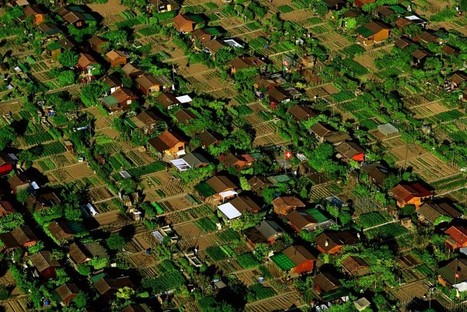


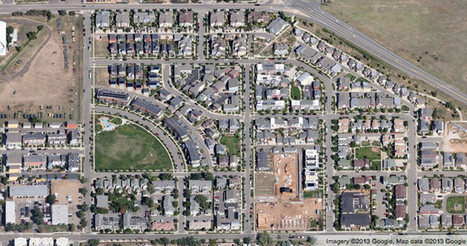





Perspective on suburban life